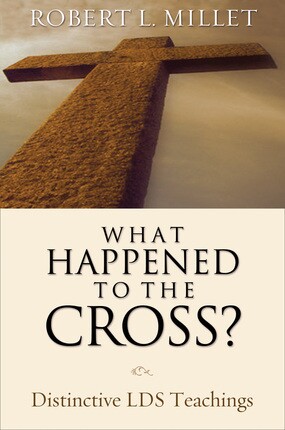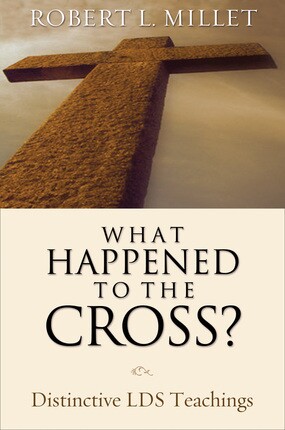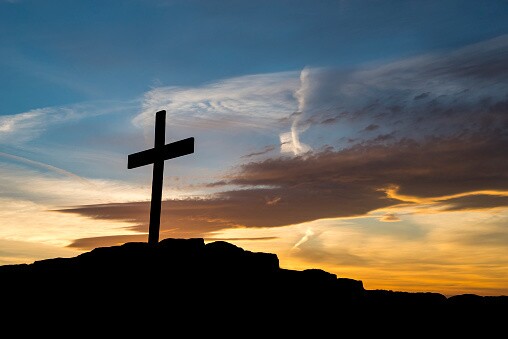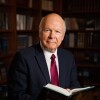Often I am asked why the Latter-day Saints do not believe in the saving efficacy of the cross, yet obviously we do. We proclaim, just as the apostle Paul did, “Jesus Christ, and him crucified” (1 Corinthians 2:2). It’s just that our belief in the power of the cross is not well known among traditional Christians. For example, a woman in Canada asked my friend Pastor Greg Johnson how he could have close association with me and other Latter-day Saints.
“Why do you ask that?” he inquired.
She responded, “Mormons don’t even believe that Jesus died on the cross.”
Greg shook his head. “Where do you suppose the Latter-day Saints think Jesus died?”
“Oh, I don’t mean that,” she said. “I mean, they don’t believe he died for our sins on the cross.”
That is simply not true. Nephi foresaw the time, some six hundred years before, when Jesus would be “lifted up upon the cross and slain for the sins of the world” (1 Nephi 11:33; emphasis added). Much like Paul, Jacob called upon the followers of the Redeemer to experience for themselves the power of the cross: “Wherefore, we would to God that we could persuade all men not to rebel against God, to provoke him to anger, but that all men would believe in Christ, and view his death, and suffer his cross and bear the shame of the world” (Jacob 1:8; emphasis added; compare Moroni 9:25).
Notice the language of the risen Lord to the people of the Book of Mormon: “Behold, I have given unto you my gospel, and this is the gospel which I have given unto you—that I came into the world to do the will of my Father, because my Father sent me.
“And my Father sent me that I might be lifted up upon the cross; and after that I had been lifted up upon the cross, that I might draw all men unto me, that as I have been lifted up by men even so should men be lifted up by the Father, to stand before me, to be judged of their works, whether they be good or whether they be evil” (3 Nephi 27:13–14; emphasis added).
The testimony of the Doctrine and Covenants is that “Jesus was crucified by sinful men for the sins of the world, yea, for the remission of sins unto the contrite heart” (D&C 21:9; emphasis added). “I am Jesus Christ, the Son of God, who was crucified for the sins of the world, even as many as will believe on my name, that they may become the [children] of God, even one in me as I am one in the Father, as the Father is one in me, that we may be one” (D&C 35:2). In a brief passage on various spiritual gifts, a revelation in the Doctrine and Covenants affirms: “To some it is given by the Holy Ghost to know that Jesus Christ is the Son of God, and that he was crucified for the sins of the world. To others it is given to believe on their words, that they also might have eternal life if they continue faithful” (D&C 46:13–14; emphasis added). Elsewhere: “Behold, I, the Lord, who was crucified for the sins of the world, give unto you a commandment that you shall forsake the world” (D&C 53:2). President Joseph F. Smith was taught in his vision of the redemption of the dead that salvation has been “wrought through the sacrifice of the Son of God upon the cross” (D&C 138:35).
Scores of passages in the Book of Mormon and modern scripture speak of the vital need for Christ’s suffering and death. That is to say, it was not just his suffering but also his death—on the cruel cross of Calvary—that was an indispensable element of the atoning sacrifice. Mormon explained: “Now Aaron began to open the scriptures unto them concerning the coming of Christ, and also concerning the resurrection of the dead, and that there could be no redemption for mankind save it were through the death and sufferings of Christ, and the atonement of his blood” (Alma 21:9; compare 22:14). In short, “he surely must die that salvation may come” (Helaman 14:15).
This doctrine was taught from the very beginning. Some three millennia before the coming of Jesus to earth, Enoch saw in vision “the day of the coming of the Son of Man, even in the flesh; and his soul rejoiced, saying: The Righteous is lifted up, and the Lamb is slain from the foundation of the world.” Enoch looked “and beheld the Son of Man lifted up on the cross, after the manner of men” (Moses 7:47, 55).
We have no quarrel with those who speak reverently of the cross, for so did those whose writings compose a significant part of the New Testament and those who spoke or wrote what is contained in our own scriptural records. The cross is a symbol. We are not opposed to symbols, for our people erect statues of the angel Moroni atop our most sacred edifices and wear CTR rings or other jewelry to point us to higher and greater realities.
Some wonder why we do not have crosses on our chuches. Although I am not aware of any doctrinal prohibition against the display of crosses, the historical fact is that many of the early Saints had Puritan roots. Puritans were opposed to excessive ceremony and ornamentation, including the use of crosses on their meetinghouses. In fact, early Baptists did not put crosses on their churches until they began to move into mainstream Protestantism sometime in the 1830s.
Although we as Latter-day Saints do not display crosses on our buildings, President Joseph F. Smith observed that “having been born anew, which is the putting away of the old man sin, and putting on of the man Christ Jesus, we have become soldiers of the Cross, having enlisted under the banner of Jehovah for time and for eternity.” 5
President Gordon B. Hinckley has said: “On Calvary He was the dying Jesus. From the tomb He emerged the Living Christ. The cross had been the bitter fruit of Judas’s betrayal, the summary of Peter’s denial. The empty tomb now became the testimony of His divinity, the assurance of eternal life, the answer to Job’s unanswered question: ‘If a man die, shall he live again?’ (Job 14:14).”
Lead image from Getty Images

What do we as members of The Church of Jesus Christ of Latter-day Saints really believe? What causes us to act as we do? How are we like other Christians? In what ways are we different?
At a time when the spotlight of the public scrutiny seems to be turned ever more intensely on the Latter-day Saints, respected author Robert L. Millet clearly describes the Church's crucial teachings in a way that's easy to understand—and to explain those of other faiths. Available at deseretbook.com.



